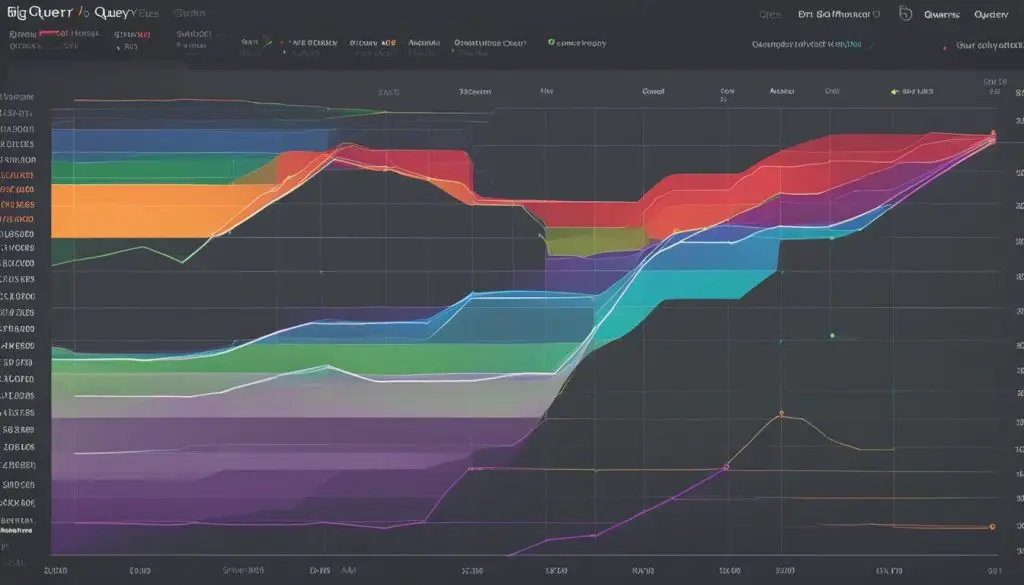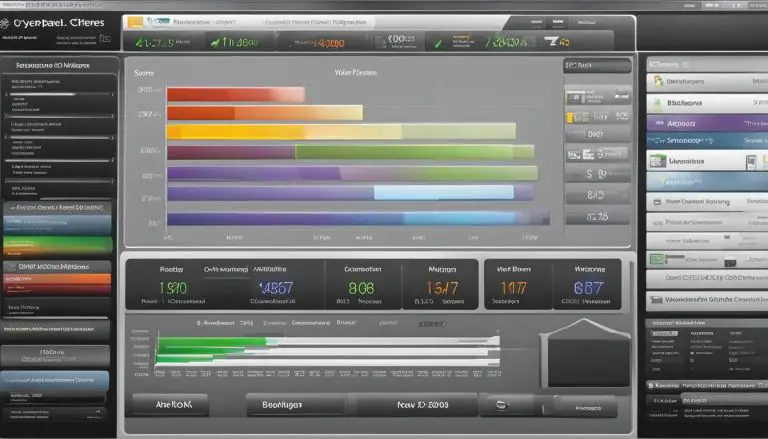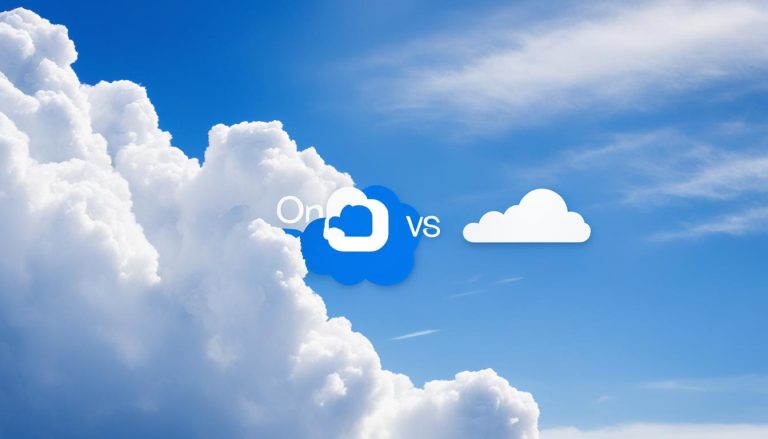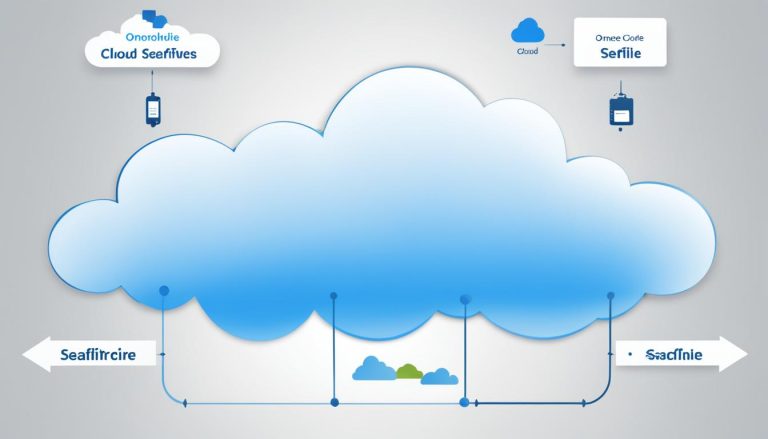What is Google BigQuery: Data Analysis Tool
When it comes to data analysis and processing, Google BigQuery is a game-changer. As a cloud-based analytics solution offered by Google Cloud Platform, BigQuery provides a powerful and efficient way to handle large datasets. Whether you need to perform ad hoc analysis, geospatial analysis, machine learning, or business intelligence, BigQuery has you covered.
With Google BigQuery, you can say goodbye to the challenges of managing extensive infrastructure and focus on extracting valuable insights from your data. Its SQL-like queries make it easy to interact with the data, and its scalability allows you to process terabytes of data in seconds and petabytes of data in minutes.
Not only does BigQuery excel in data warehousing, but it also supports the integration of data from various sources. You can query not only the data stored within BigQuery itself but also external data sources, such as other Google Cloud storage services, database services, and even multi-cloud data stored in other public clouds like AWS or Azure.
BigQuery is a managed service, meaning you don’t have to worry about infrastructure management. Google takes care of that so that you can focus on leveraging the features and functionalities BigQuery offers.
To give you a better understanding of the capabilities and advantages of Google BigQuery, we will delve deeper into its various features and use cases. By the end of this article, you’ll have a clear grasp of how BigQuery can revolutionize your data analysis processes and unlock new insights.
Key Takeaways:
- Google BigQuery is a cloud-based analytics tool for data analysis and processing.
- It supports SQL-like queries and offers fast and efficient processing of large datasets.
- BigQuery integrates with various data sources, including external and multi-cloud data.
- It is a managed service, eliminating the need for extensive infrastructure management.
- By leveraging BigQuery, users can derive valuable insights from their data efficiently and effectively.
The Capabilities of BigQuery
BigQuery, as a powerful data analysis tool, offers a wide range of capabilities for users to derive meaningful insights from their datasets. With its diverse functionalities, BigQuery caters to various data analysis workflows, including ad hoc analysis, geospatial analysis, machine learning, and business intelligence.
Ad Hoc Analysis
BigQuery enables users to perform ad hoc analysis using GoogleSQL, the SQL dialect in BigQuery. Through the user-friendly Google Cloud console or third-party tools, users can quickly and efficiently explore their datasets, gain real-time insights, and generate custom reports to support data-driven decision-making.
Geospatial Analysis
For users working with geospatial data, BigQuery provides robust support for geospatial analysis. Leveraging the extensive set of geography data types and built-in GoogleSQL geography functions, users can perform complex geospatial analysis, visualize geographic patterns, and solve location-based problems with ease.
Machine Learning
With BigQuery ML, users can tap into the power of machine learning directly within BigQuery. By using GoogleSQL queries, users can create and execute machine learning models, leveraging BigQuery’s computational capabilities to handle large datasets. This integrated approach eliminates the need for data movement and enhances the efficiency of machine learning workflows.
Business Intelligence
BigQuery BI Engine offers a fast in-memory analysis service that empowers users to build interactive dashboards and reports for their business intelligence needs. By leveraging the in-memory processing power of BigQuery BI Engine, users can gain near-instant query response times, allowing for real-time data exploration, visualization, and decision-making.
Overall, BigQuery’s capabilities in ad hoc analysis, geospatial analysis, machine learning, and business intelligence make it a versatile tool for organizations looking to unlock the full potential of their data.
Querying and Data Sources in BigQuery
The primary unit of analysis in BigQuery is the SQL query. BigQuery offers two SQL dialects: GoogleSQL and legacy SQL, with GoogleSQL being the language of choice for its support of geospatial analysis and machine learning capabilities. Users can easily query data stored in BigQuery itself as it serves as a powerful data repository. This can be done by either loading data into BigQuery or manipulating existing data within the platform. Additionally, BigQuery provides the flexibility to query external data sources such as other Google Cloud storage services or database services, allowing users to access and analyze diverse datasets. BigQuery can also handle multi-cloud data, enabling users to query and analyze data stored in other public clouds like AWS or Azure. Furthermore, BigQuery users can tap into the extensive collection of publicly available datasets through the public dataset marketplace, providing a wealth of data for analysis across various domains.
Benefits of Querying and Data Sources in BigQuery
Access and analyze diverse data: BigQuery allows users to query and analyze data from various sources, including data stored in BigQuery itself, external data sources, and even multi-cloud data stored in different public clouds.
Full SQL querying capabilities: With support for SQL dialects like GoogleSQL and legacy SQL, BigQuery provides a familiar and powerful querying environment for users.
Expanded data exploration: The ability to query external data sources and access public datasets widens the scope of data exploration, enabling users to gain insights from a broader range of datasets.
By leveraging the SQL querying capabilities of BigQuery and its ability to handle diverse data sources, users can unlock the full potential of their data and derive meaningful insights to drive informed decision-making.
| Querying and Data Sources in BigQuery | Benefits |
|---|---|
| Multiple SQL dialects (GoogleSQL, legacy SQL) | Flexibility in querying and compatibility with existing SQL knowledge |
| Data stored in BigQuery | Easy access and efficient querying of data within the platform |
| External data sources | Ability to query and analyze data from other Google Cloud storage services, database services, and multi-cloud environments |
| Public datasets | Availability of a wide range of datasets for analysis |
Query Jobs and Performance in BigQuery
In BigQuery, users have the flexibility to create multiple types of query jobs to handle various data operations, including loading, exporting, querying, and copying data. These query jobs can be initiated through different tools and interfaces, such as the Google Cloud console, bq command-line tool, BigQuery REST API, or BigQuery client libraries.
There are two main types of query jobs in BigQuery: interactive query jobs and batch query jobs.
Interactive Query Jobs
Interactive queries in BigQuery are designed to provide real-time responses by processing the data as soon as possible. When users submit an interactive query job, BigQuery initiates the query immediately and utilizes available resources to deliver query results promptly.
Batch Query Jobs
On the other hand, batch query jobs in BigQuery are scheduled to run when system resources are idle. These jobs are queued and wait for an opportune time to execute, optimizing resource allocation and system efficiency. Batch jobs are particularly useful for long-running queries that are not time-sensitive.
Additionally, BigQuery offers the option to save and share queries, allowing users to reuse frequently executed queries and collaborate with teammates more efficiently.
Performance is a critical aspect of BigQuery, and it includes query monitoring and dynamic planning. Query monitoring helps users track the progress and performance of their queries, providing valuable insights into query execution times, resource consumption, and any potential bottlenecks.
BigQuery employs dynamic planning to optimize resource allocation and query execution. It dynamically adjusts query plans based on progress and allocates resources dynamically to ensure efficient processing and minimize query execution time.
When it comes to query pricing, BigQuery offers different models for query processing, including on-demand pricing and capacity-based pricing. Users can choose the most suitable pricing model based on their query workload and budget requirements.
To manage query costs effectively, BigQuery also allows users to set custom quotas and cost controls. These cost controls enable users to specify limits on the amount of data processed by each query and impose budget restrictions on query costs.
Overall, the robust query job capabilities, performance monitoring, and pricing options in BigQuery empower users to handle complex data operations with ease, ensuring efficient analysis and cost-effective data processing.

| Query Job Types | Key Features |
|---|---|
| Interactive Query Jobs |
|
| Batch Query Jobs |
|
| Additional Features | |
| Saved Queries | Reuse frequently executed queries and collaborate with teammates more efficiently |
| Query Monitoring | Track progress, execution time, and resource consumption of queries |
| Dynamic Planning | Optimize resource allocation and query execution based on progress |
| Pricing and Cost Controls | |
| Query Pricing Models |
|
| Cost Controls |
|
Conclusion
Google BigQuery is a powerful data analysis tool that empowers organizations to process and analyze large datasets in a cloud-based environment. With its extensive capabilities for ad hoc analysis, geospatial analysis, machine learning, and business intelligence, BigQuery offers users a wide array of features to extract valuable insights from their data.
One of the key advantages of BigQuery is its support for SQL queries, making it accessible to users familiar with SQL language. Its scalability allows for efficient processing and analysis of large volumes of data, making it an ideal choice for cloud-based analytics. Whether organizations need to conduct ad hoc analyses or perform complex geospatial analysis, BigQuery provides the necessary tools and functionality.
Moreover, BigQuery’s seamless integration with other Google Cloud Platform services enables users to leverage its full potential. It allows users to query and analyze data stored in BigQuery itself, as well as external data sources such as other cloud storage services or databases. Additionally, BigQuery facilitates analysis of multi-cloud data, empowering organizations to work with data stored in other public clouds like AWS or Azure.
Overall, Google BigQuery is a robust and efficient data analysis solution, offering an array of features and capabilities for organizations looking to gain valuable insights from their datasets. With its support for SQL queries, cloud-based analytics, and data processing, BigQuery is a reliable tool for organizations of all sizes, helping them make data-driven decisions and unlock the full potential of their data.
FAQ
What is Google BigQuery?
Google BigQuery is a cloud-based analytics solution provided by Google Cloud Platform. It is a powerful data analysis tool designed for processing and analyzing large datasets.
What are the capabilities of BigQuery?
BigQuery supports various data analysis workflows, including ad hoc analysis, geospatial analysis, machine learning, and business intelligence. It offers features for analyzing and visualizing geospatial data, creating machine learning models, and building interactive dashboards and reports.
How does BigQuery handle data querying and data sources?
The primary unit of analysis in BigQuery is the SQL query. It supports two SQL dialects: GoogleSQL and legacy SQL. Users can query data stored in BigQuery itself, manipulate existing data, or query external data sources such as other Google Cloud storage services or database services. It also supports analyzing multi-cloud data and publicly available datasets.
How do query jobs and performance work in BigQuery?
Users can create query jobs to load, export, query, or copy data in BigQuery. Jobs can be created through various methods such as the Google Cloud console, bq command-line tool, REST API, or client libraries. There are interactive queries that run as soon as possible and batch queries that are queued until idle resources are available. BigQuery also allows users to save and share queries. It offers query monitoring, dynamic planning, and different pricing models for query processing.
What are the key points about Google BigQuery?
Google BigQuery is a comprehensive data analysis tool that provides cloud-based analytics, SQL-like queries, and a massively scalable and managed service for data processing. It enables organizations to effectively analyze and process large datasets without the need for extensive infrastructure management.
Source Links
- About the Author
- Latest Posts
Mark is a senior content editor at Text-Center.com and has more than 20 years of experience with linux and windows operating systems. He also writes for Biteno.com






